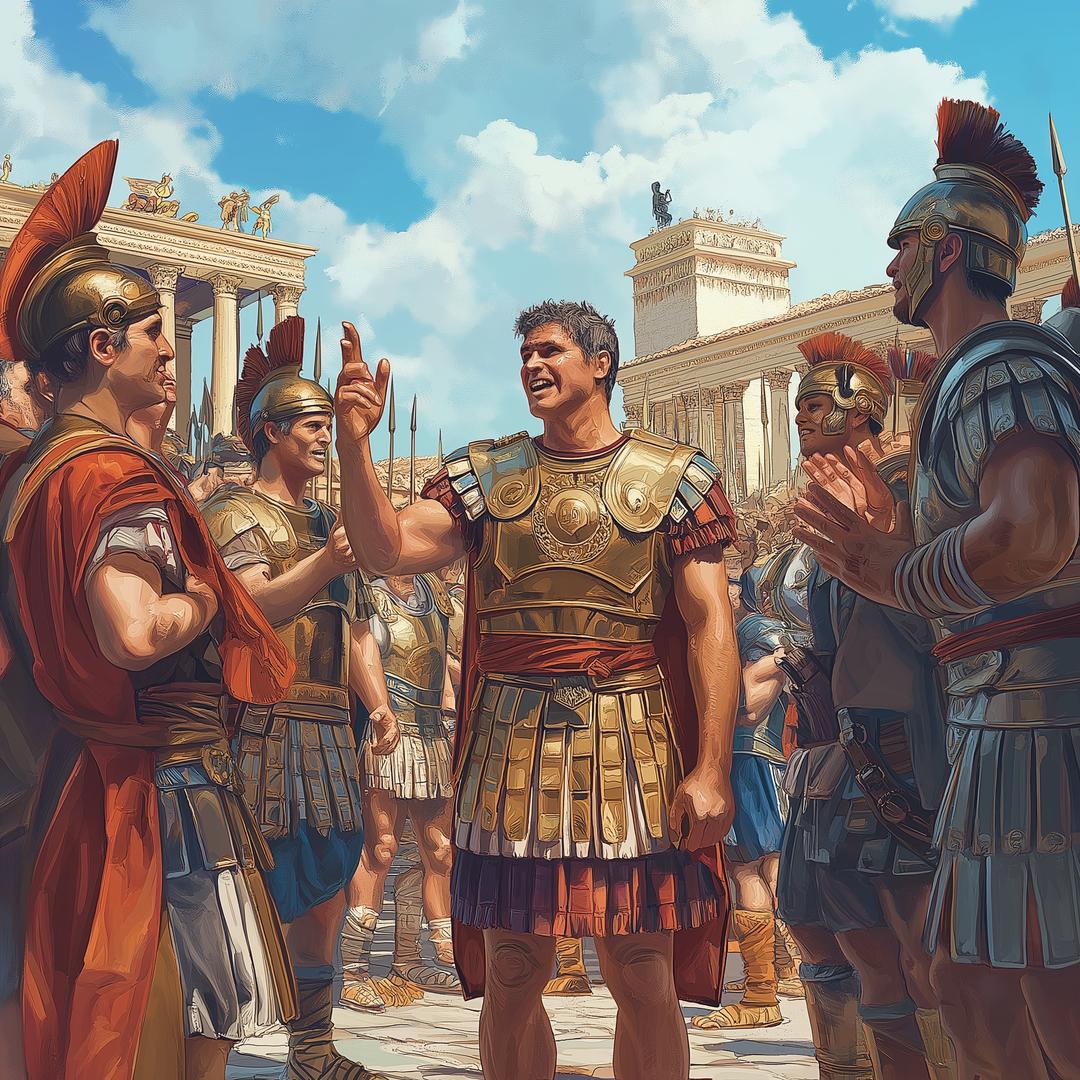Coin Types

Challenge Coin History: The Tradition Behind It
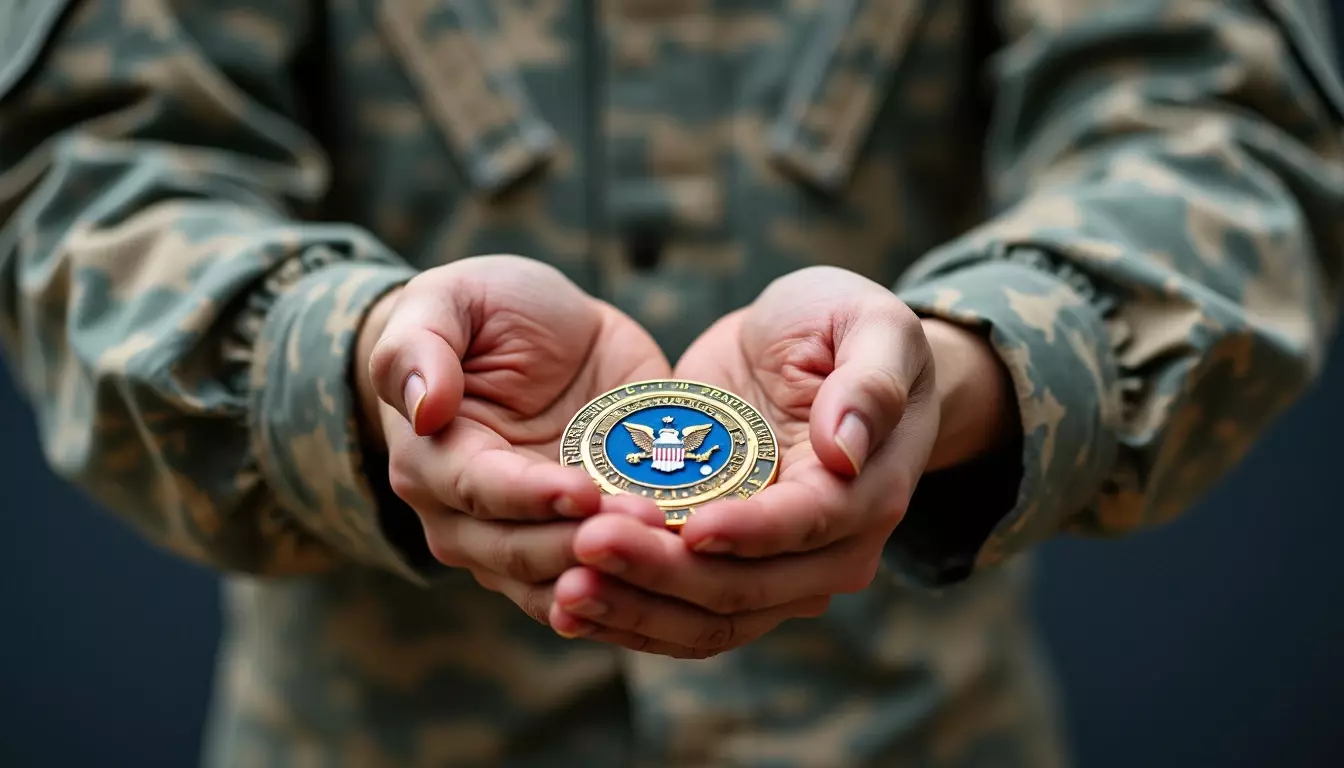
Over the years, many military traditions have originated and evolved to show one’s camaraderie, deeply rooted in military history, the most notable being a simple coin! The 10th Special Forces Group was the first U.S. Army unit to mint its own coin, setting a precedent that many other units followed. A coin with symbols that reflect a person’s service and loyalty to a widespread organization. Such coins are called challenge coins, and they’ve traveled far beyond the reach of the military to the loyalty of regular civilians.
What Exactly is a Challenge Coin?
Challenge coins are traditional medallions given out to service members by military commanders. Most of the time they represent one’s camaraderie and allegiance to the military forces. Challenge coins tend to be quite small. Their diameter varies from 3.8 centimeters to 5 centimeters, and the thickness is about 1/4 of a centimeter. Many challenge coins feature a unit's insignia, which serves as a mark of identity and pride. Though most of the coins are circular, some come in all sorts of shapes — pentagons, dog tags, shields, and even arrowheads. Their composition generally includes copper, pewter, and nickel, but many other finishes are often used. Some designs can be simple — just a small emblem or symbol, — but others can have intricate cut-outs, complex designs, and even 3D parts. In addition to traditional designs, custom challenge coins can be personalized with various options such as base metal and size, serving multiple purposes from fostering camaraderie to commemorating events.
Challenge Coin Origins
The challenge coin tradition has been going for such a long time that it’s nearly impossible to tell how it all began. Some would say that the challenge coin was first seen in Ancient Rome, where soldiers were awarded bonus coins for their achievements in battle. Soldiers would present their skill in battle and would then be awarded special medallions for their allegiance. Instead of spending or using these precious coins, the soldiers would keep them as a sign of honour and pride.
The tradition of minting unit coins began with the 10th Special Forces Group, where these coins were presented to unit members as a form of recognition and bonding, eventually leading to a widespread tradition in the military for commemorating service and achievements.
However, when speaking officially, traditional challenge coins can be traced back to the First World War. During the battles between America and Germany, Ivy League Lieutenants were given sets of challenge coins to hand out to their pilots. It so happened to be that one of the pilots got shot down and captured by the German army. He was later found by a French patrol at a French outpost. The French decided that the pilot was a German spy and sentenced him to execution. Later, however, one of the crew members of the French patrol examined the traditional coin that the pilot had held in a pouch around his neck. The French recognized American emblems and symbols on the coin that the pilot had kept in his small leather pouch and set the pilot free.
Evolution of Challenge Coins
The evolution of challenge coins has been a fascinating journey, spanning centuries and reflecting the changing times. From their humble beginnings in ancient Rome, where soldiers were awarded simple tokens for their bravery, challenge coins have transformed significantly. Initially, these coins bore the emblem of a legion or unit, serving as a mark of honor and allegiance. As time progressed, the designs became more sophisticated, incorporating intricate details and symbols that represented the values and achievements of the recipients.
The modern challenge coin tradition, which gained prominence during World War I, marked a significant turning point. During this period, challenge coins were used to foster camaraderie among military personnel, with each coin bearing unique emblems and insignia. This tradition continued to evolve, with new designs, materials, and production techniques being introduced. Today, challenge coins are not only a symbol of military pride but are also embraced by law enforcement agencies, businesses, and various organizations worldwide. The enduring appeal of challenge coins lies in their ability to adapt and remain relevant, while still honouring their rich historical roots.
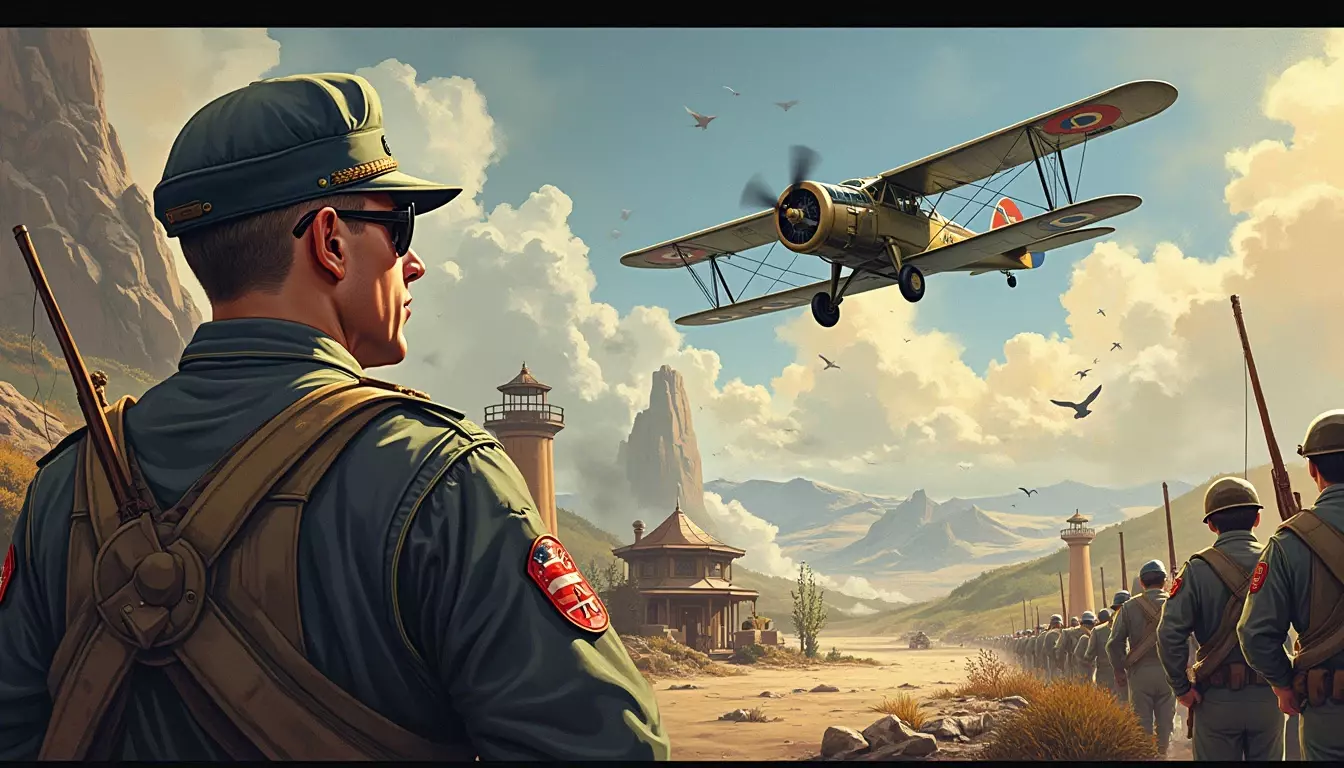
The Challenge
Originating in Germany after the Second World War, the ‘pfennig check’ (now known as the coin check) was a popular tradition in local bars where the people involved would place a pfennig coin on the countertop. If someone wouldn’t have a pfennig to place during the check, that person would be buying the drinks for all the others.
In more recent times, when a coin check is called, the ones involved would slam their challenge coins on the bar. Similarly, the people without a challenge coin would be the ones who’d buy the drinks for the others. On the other hand, if everyone slammed their challenge coin on the bar during the challenge, the one who started the challenge would have to buy the drinks.
In more recent times, when a coin check is called, the ones involved would slam their challenge coins on the bar. Similarly, the people without a challenge coin would be the ones who’d buy the drinks for the others. On the other hand, if everyone slammed their challenge coin on the bar during the challenge, the one who started the challenge would have to buy the drinks.
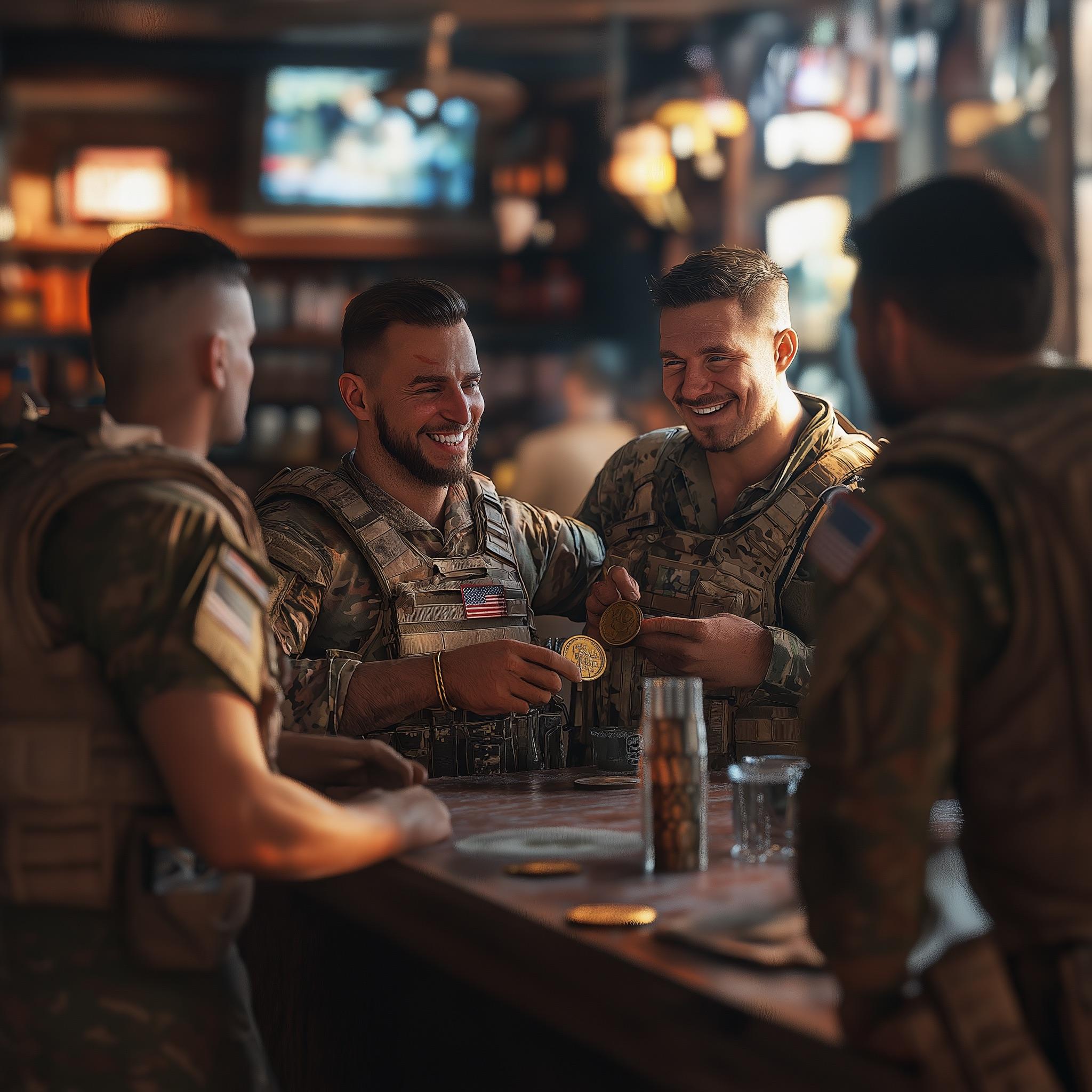
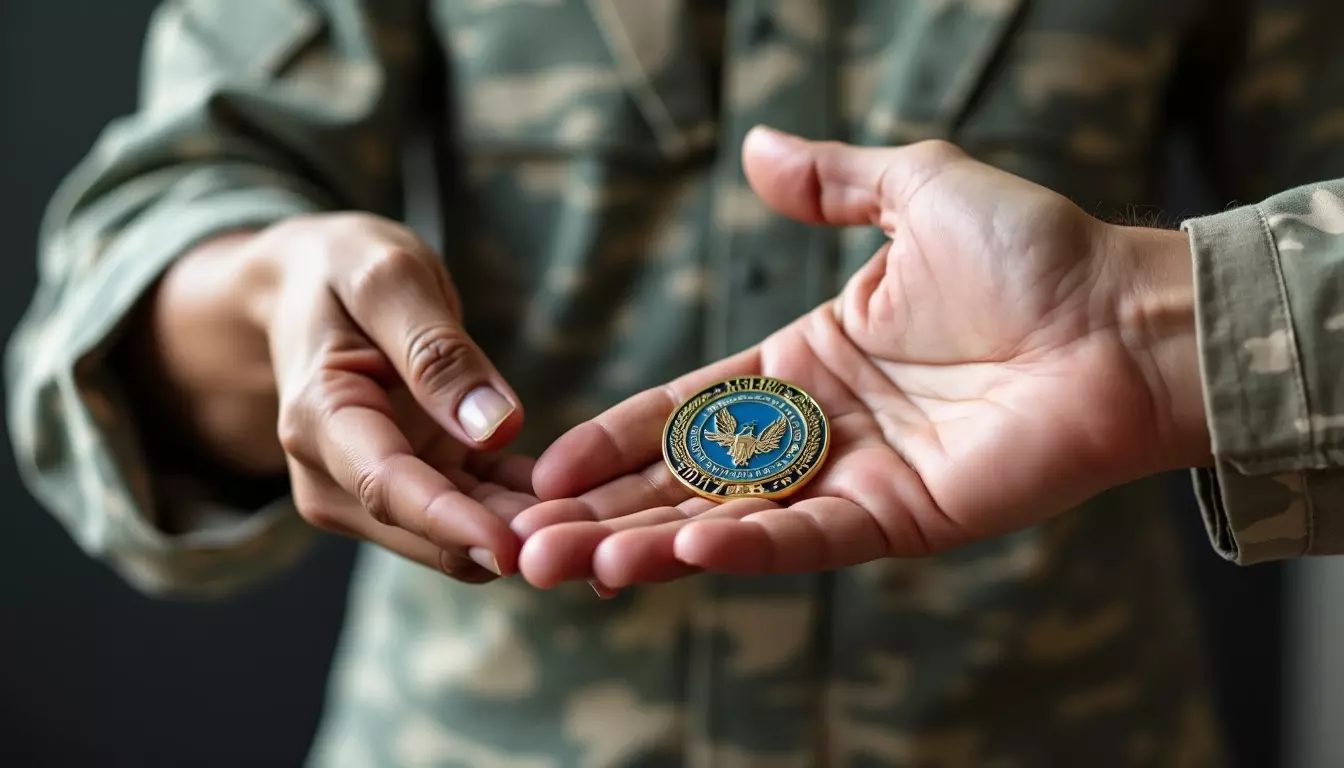
The Handshake
The transfer of challenge coins through simple handshakes became a recent trend in many military forces. Take Secretary of Defense Robert Gates for example: in June 2011, he visited military bases in Afghanistan and shook hands with men and women in the Armed Forces. To their surprise, what looked to be a simple handshake was a secret gesture of honor. The men and women often found a unique Secretary of Defense challenge coin in their hands once the handshake had ended. This practice is particularly significant within a military unit, where challenge coins symbolize membership and camaraderie among service members.
Design and Appearance
Challenge coins are small, medallion-like tokens that captivate with their diverse designs and materials. Typically featuring the emblem or insignia of an organization, these coins can be crafted from a variety of metals, including brass, zinc, and copper. Some even incorporate alternative materials like plastic and wood, adding a unique touch to their appearance. The design of a challenge coin can vary greatly, reflecting the identity and purpose of the issuing organization.
Some challenge coins boast simple, elegant designs, with clean lines and minimalistic symbols. Others are more elaborate, showcasing intricate details, vibrant colors, and complex engravings. The size of a challenge coin can also differ, ranging from small, pocket-sized tokens to larger, more substantial pieces that are often displayed on desks or walls. This versatility in design and appearance allows challenge coins to serve multiple purposes, from commemorating special events to recognizing individual achievements.
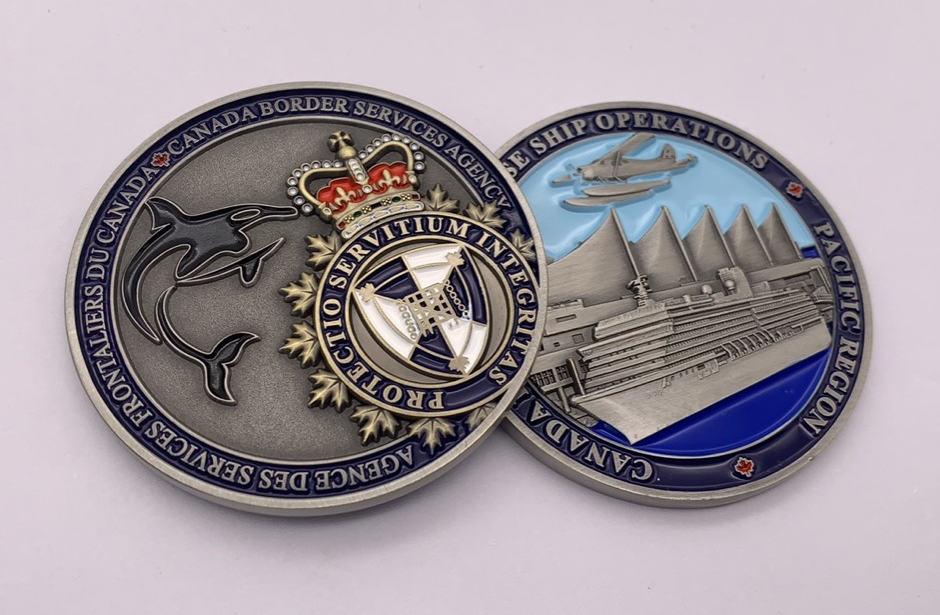
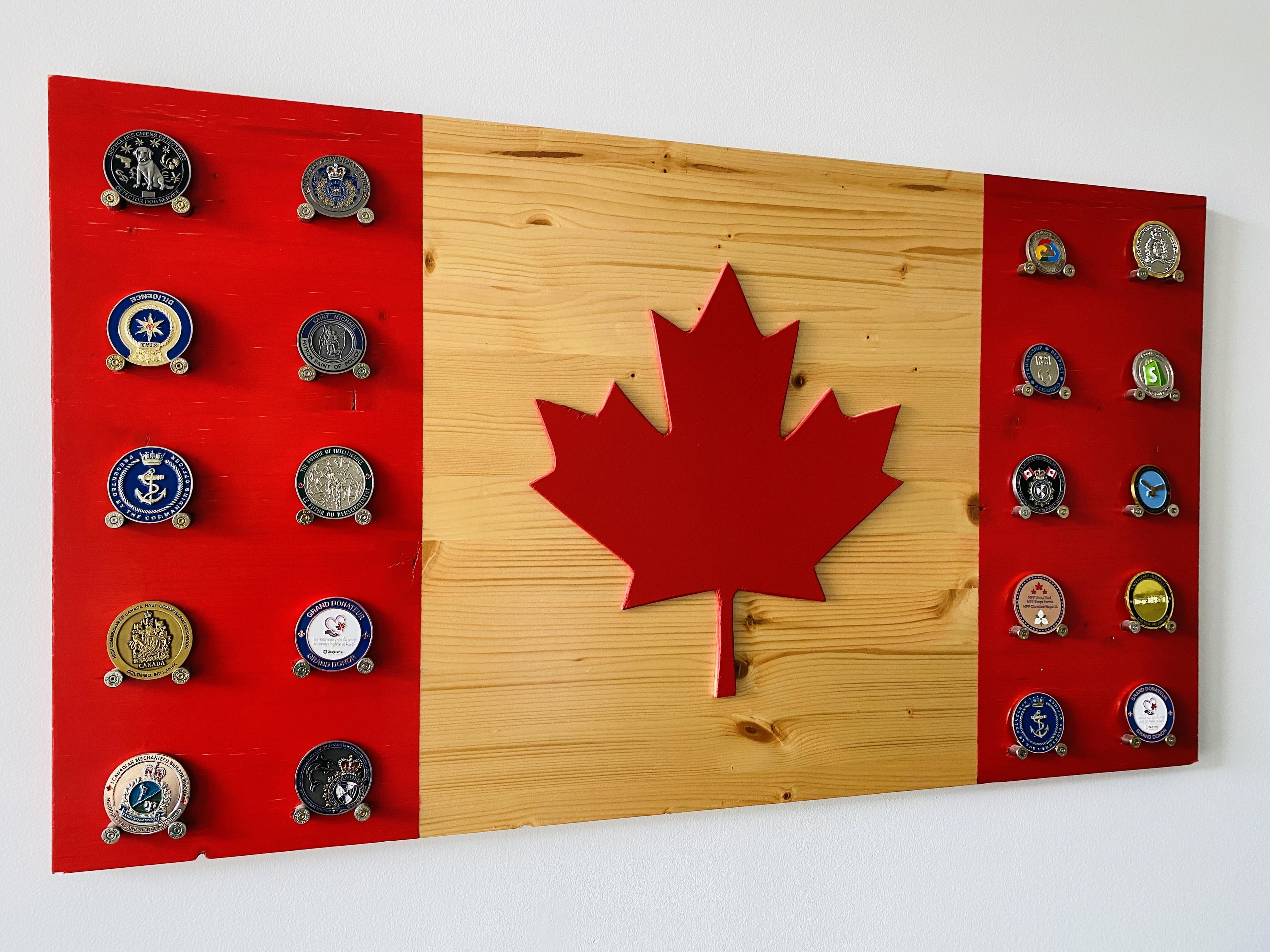
Display and Collecting
Challenge coins are more than just tokens; they are cherished symbols of membership and service. Many individuals proudly display their challenge coins in special cases or on walls, creating a visual testament to their affiliations and accomplishments. Others prefer to carry their coins with them, serving as a constant reminder of their connections and the values they uphold.
Collecting challenge coins has become a popular hobby, with enthusiasts seeking out rare and unique pieces to add to their collections. Some challenge coins are highly sought after, particularly those that are limited in production or feature distinctive designs. Online marketplaces and specialty stores have made it easier for collectors to buy, sell, and trade challenge coins, fostering a vibrant community of enthusiasts. Whether displayed prominently or carried discreetly, challenge coins continue to hold significant sentimental value for those who possess them.

Beyond the Military
Though the military still feels ecstatic about the idea of using simple coins as a gesture of allegiance, military challenge coins have also found their place in various non-military contexts. During World War II, the Office of Strategic Services (OSS) used challenge coins for identification among agents engaged in covert missions. Challenge coins have outgrown the military. Today, these coins have escaped the firm grasp of military forces and leaked into the hands of civilians. Many administrators and authority figures exchange their unit coin as business cards, further emphasizing the tradition’s reach. It’s more than fascinating how such a simple concept of a coin evolved into a truly meaningful and widespread emblem of tradition and honour.
Today, these custom Canadian coins are in different versions such as navy challenge coins, marine corps challenge coins, corporate challenge coins, police challenge coins and much more. The possibilities continue over the years. Today, modern challenge coins incorporate popular culture elements and unique organizational values, catering to a wider audience and enriching the tradition.
Modern Challenge Coin Production
The production of challenge coins has evolved into a sophisticated process, leveraging advanced techniques and materials to create high-quality tokens. Modern challenge coins can be produced using various methods, including die-striking, casting, and even 3D printing. These techniques allow for precise and intricate designs, ensuring that each coin is a true work of art.
Customization options have also expanded, enabling organizations to design their own challenge coins with unique emblems, logos, and symbols. Digital technology plays a crucial role in this process, allowing for detailed engravings, color fills, and other intricate features. The rise of online marketplaces and e-commerce has further simplified the process, making it easier than ever for organizations to order custom challenge coins and have them delivered directly to their doorstep. This blend of tradition and innovation ensures that challenge coins remain a powerful symbol of unity and pride.
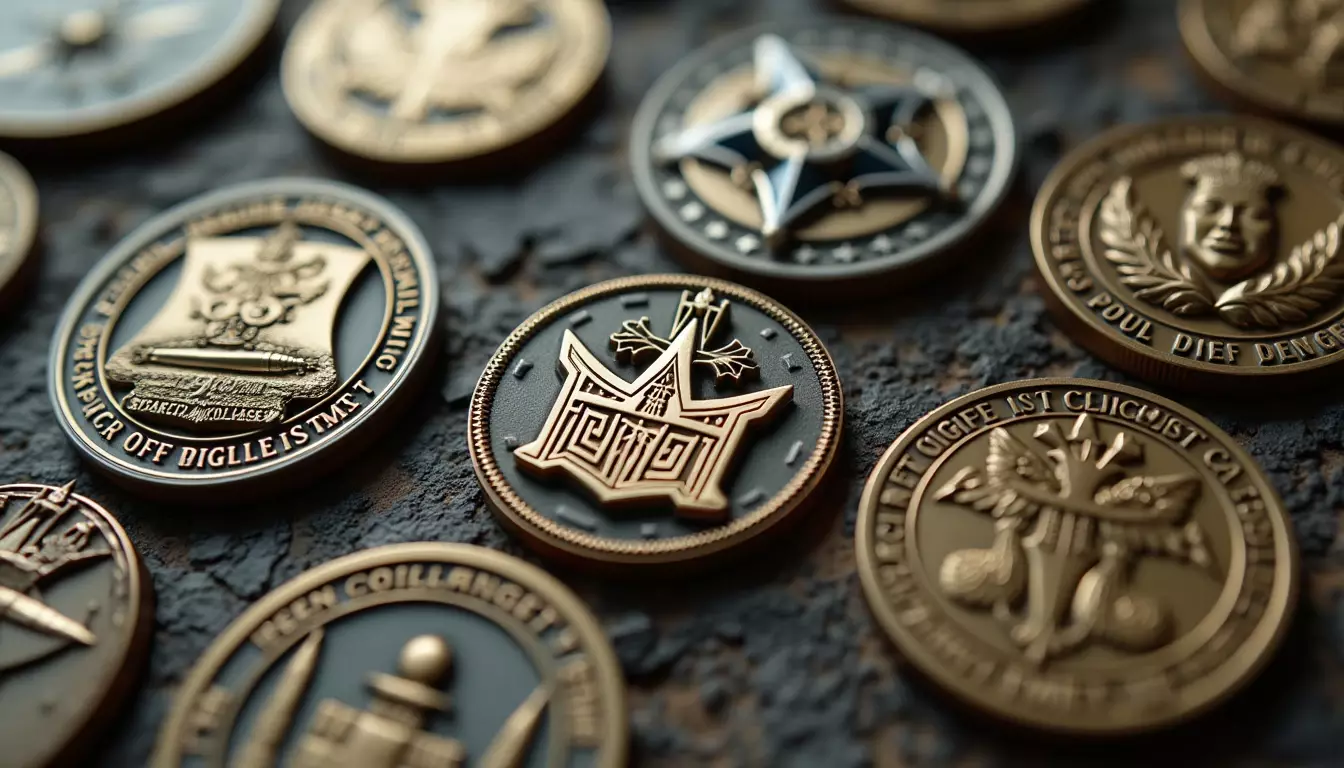
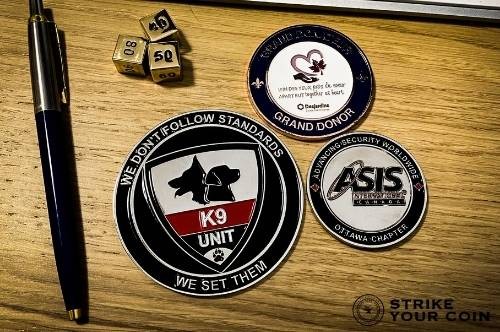
Conclusion
Challenge coins have a rich history and tradition, dating back to ancient Rome. From their origins as simple tokens to their modern-day use as symbols of membership and service, challenge coins have evolved significantly over time. Today, challenge coins are used by a wide range of organizations, including military units, law enforcement agencies, and businesses. With their unique designs, intricate details, and symbolic meaning, challenge coins have become a popular collectible item and a powerful way to build team spirit and foster a sense of camaraderie and unity among group members. Whether you are a collector, a member of an organization, or simply someone who appreciates the history and tradition of challenge coins, these small tokens are sure to continue to play an important role in our lives for years to come.





